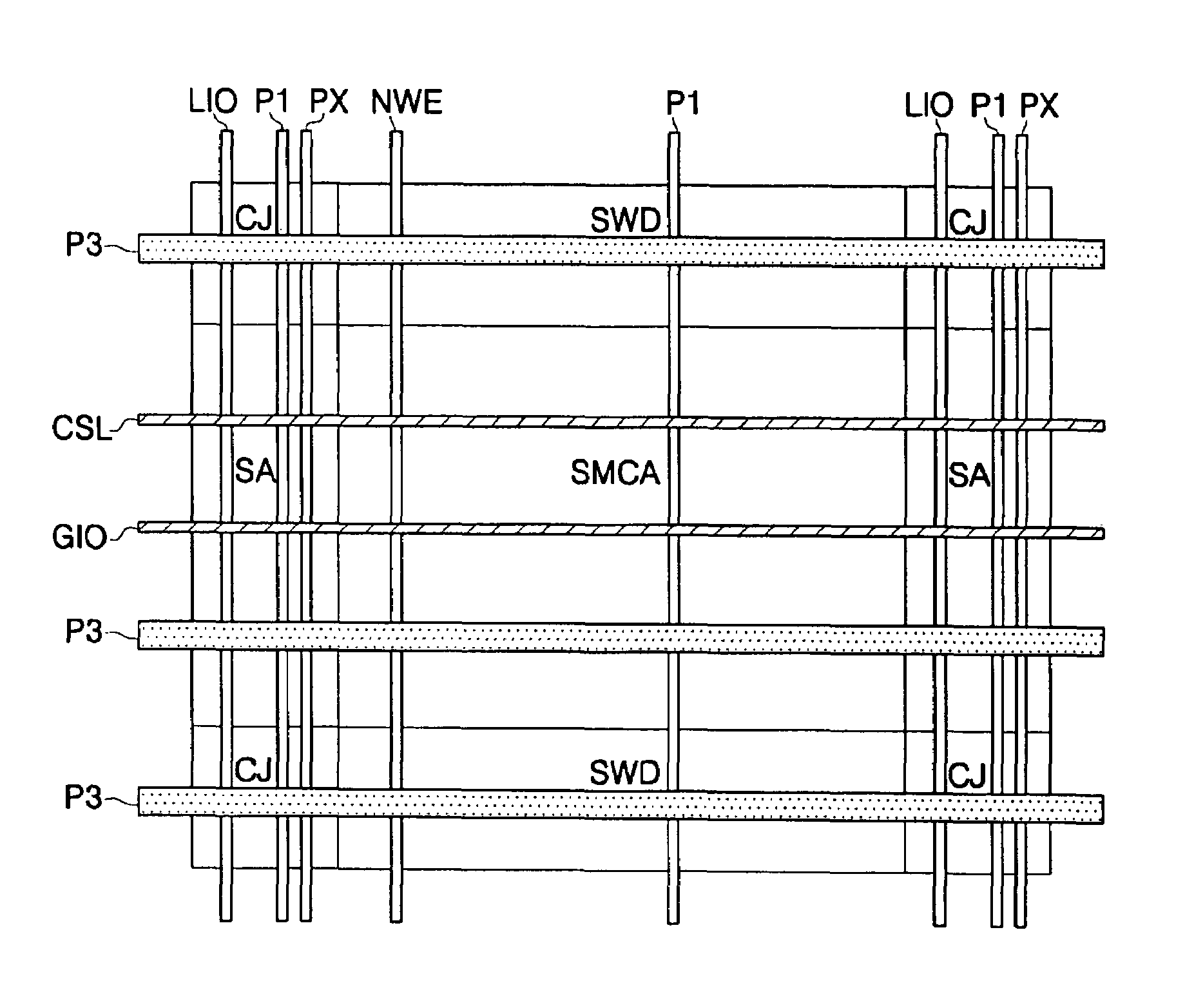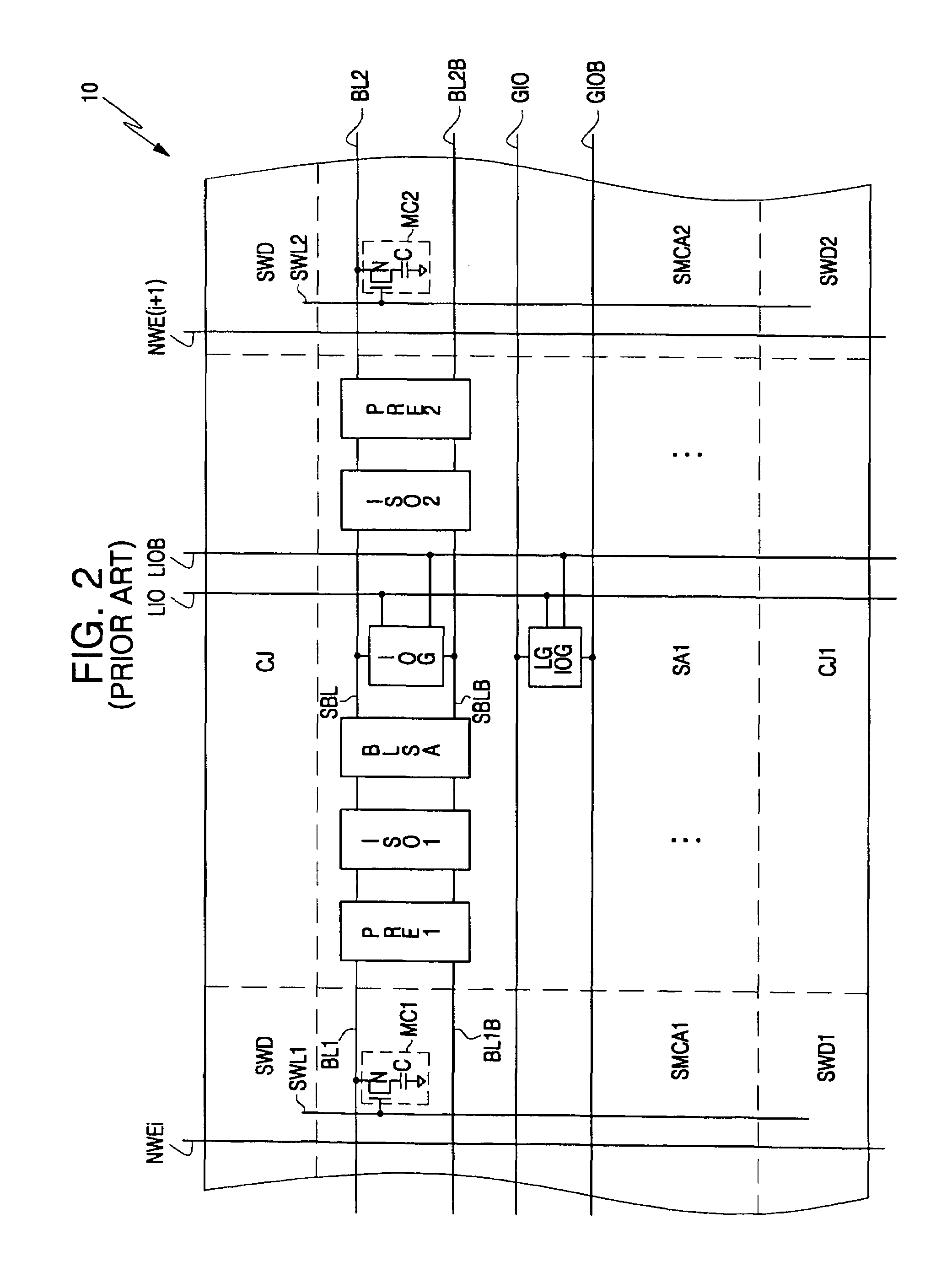Semiconductor memory device and method of arranging signal and power lines thereof
a technology of semiconductor memory and signal, applied in the direction of information storage, static storage, digital storage, etc., can solve the problems of reducing power supply stability, reducing power supply width, and increasing voltage drop and power consumption, so as to reduce power line width, and reduce power line width
- Summary
- Abstract
- Description
- Claims
- Application Information
AI Technical Summary
Benefits of technology
Problems solved by technology
Method used
Image
Examples
first embodiment
[0029]FIG. 6 illustrates a first embodiment with signal and power lines routed over a memory array using three layers of metal. The first metal layer contains NWE, PX, LIO signal lines and P1 power lines, similar to the prior art. The second metal layer contains CSL and GIO signal lines, and no power lines. The third metal layer contains power lines P3 perpendicular to the P1 power lines formed with the first metal layer. The P3 power lines can be made wider than the prior art P2 power lines formed with the second metal layer because the CSL and GIO lines do not compete for the metal 3 area overlying the memory array. Although for purposes of clarity the feature is not illustrated in FIG. 6, portions of the P3 lines can even directly overlie CSL and GIO lines. Connections to power lines P1 exist in clearances where a P3 line overlies a P1 line of the same voltage, and may use a via contact (direct connection between the third metal and the first metal) or intermediate P2 pad (not sh...
second embodiment
[0030]FIG. 7 illustrates a second embodiment with signal and power lines routed over a memory array using three layers of metal. In this embodiment, P1 lines do not exist on metal 1, and P2 lines parallel to CSL and GIO on metal 2 distribute power to the memory array circuitry. P3 lines are arranged on metal 3, perpendicular to the P2 lines and connecting to the P2 lines where a P3 line and a P2 line of the same voltage level cross. The P2 lines can remain relatively thin, while the P3 lines can be made relatively wide to efficiently carry current to the vicinity where it will be needed.
third embodiment
[0031]FIG. 8 illustrates a third embodiment with signal and power lines routed over a memory array using three layers of metal. In this embodiment, thin P1 power lines are crossed by thin P2 power lines. P1 and P2 lines of the same voltage level connect where they cross. Wider P3 power lines are routed parallel to the P2 lines, and generally overlap the P2 lines of the same voltage level. As the P3 and P2 lines overlap along their length, connection between the two lines can be made in long channels or in more frequent, abbreviated vias. The P3 / P2 structures have lower resistance per unit length while occupying far less space on the metal layer shared with CSL and GIO.
PUM
 Login to View More
Login to View More Abstract
Description
Claims
Application Information
 Login to View More
Login to View More - R&D
- Intellectual Property
- Life Sciences
- Materials
- Tech Scout
- Unparalleled Data Quality
- Higher Quality Content
- 60% Fewer Hallucinations
Browse by: Latest US Patents, China's latest patents, Technical Efficacy Thesaurus, Application Domain, Technology Topic, Popular Technical Reports.
© 2025 PatSnap. All rights reserved.Legal|Privacy policy|Modern Slavery Act Transparency Statement|Sitemap|About US| Contact US: help@patsnap.com



